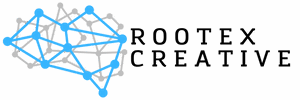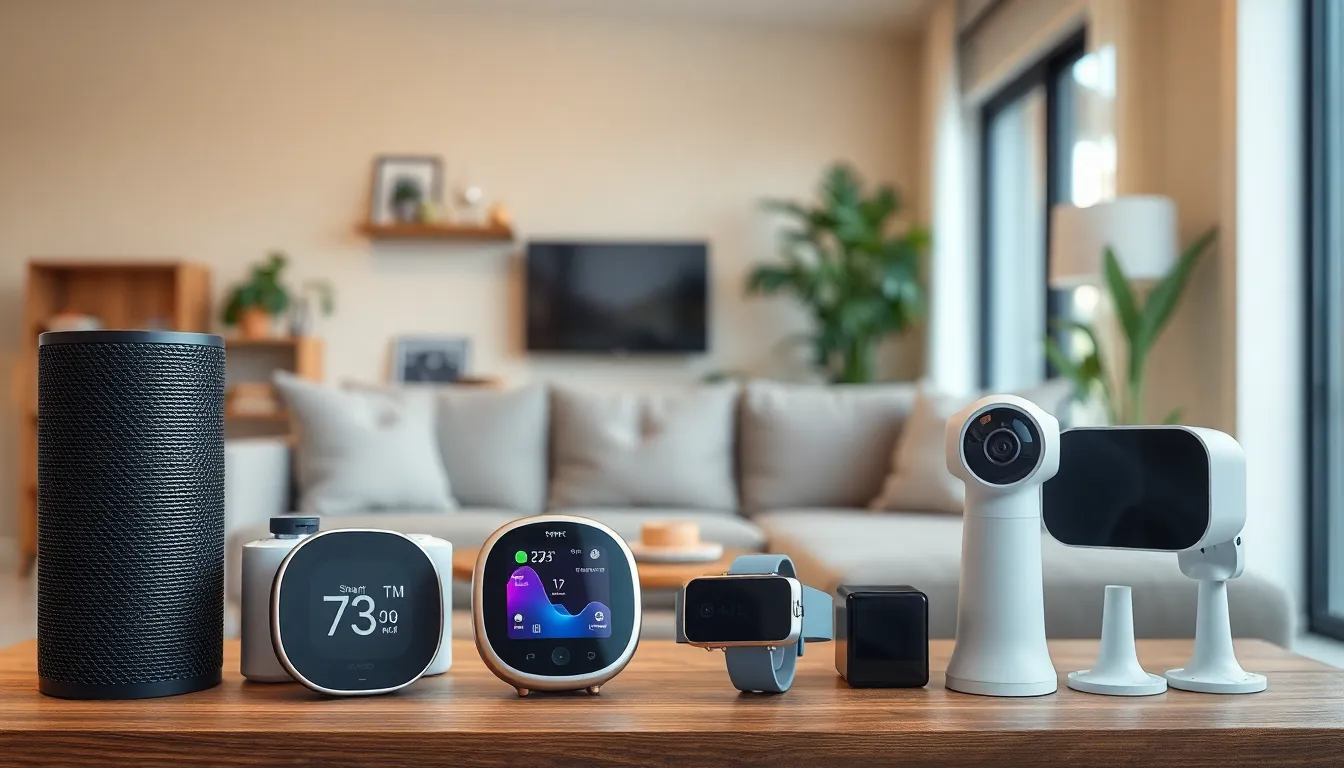In a world where your fridge can text you when you’re out of milk, IoT devices have turned the mundane into the extraordinary. From smart thermostats that learn your preferences to wearable health monitors that remind you to breathe (seriously, don’t forget), these gadgets are revolutionizing daily life. It’s like living in a sci-fi movie, minus the flying cars and questionable hairstyles.
Table of Contents
ToggleOverview of IoT Devices
IoT devices play a crucial role in modern technology, connecting various everyday items to the internet for improved functionality. Smart thermostats exemplify this, allowing users to control home temperatures remotely, optimizing energy usage. Wearable health monitors provide real-time insights into fitness levels, benefiting users by tracking heart rates and sleep patterns.
Numerous types of IoT devices enhance daily life. Smart speakers respond to voice commands, enabling hands-free control of compatible devices. Security cameras connected to the internet offer real-time monitoring, enhancing safety in homes and businesses. Smart refrigerators track inventory and suggest recipes based on available ingredients.
Data drives the effectiveness of IoT devices. According to Statista, the number of IoT devices is projected to reach over 30 billion by 2025. This growth leads to increased interconnectivity, further embedding IoT into everyday routines.
Challenges exist alongside the benefits of IoT devices. Security vulnerabilities pose risks, as connected devices can be targets for cyber-attacks. Manufacturers must prioritize robust security measures during device development. Additionally, interoperability among devices is essential for a seamless user experience, requiring collaboration among various tech companies.
As IoT technology evolves, its applications expand. Industries such as agriculture utilize smart sensors for monitoring crop conditions. In healthcare, IoT devices improve patient outcomes through continuous health monitoring, enhancing telemedicine services. Overall, the rapid advancement of IoT devices continues to reshape lifestyles, making everyday tasks simpler and more efficient.
Types of IoT Devices
Various IoT devices exist across different sectors, enhancing functionality and connectivity. Here are some key categories.
Consumer IoT Devices
Consumer IoT devices simplify daily tasks in homes. Smart speakers provide voice-activated assistance, while smart thermostats allow temperature control remotely. Wearable health monitors track fitness metrics and offer actionable insights. Smart security cameras enable real-time surveillance and alerts, enhancing home security. Smart refrigerators can suggest recipes based on available ingredients. These devices create a seamless user experience, making life easier and more efficient.
Industrial IoT Devices
Industrial IoT devices optimize operations in manufacturing and logistics. Sensors monitor equipment performance and provide data for predictive maintenance. Smart factories use connected machines to streamline production processes. Asset tracking devices ensure efficient supply chain management. These tools enhance productivity and reduce downtime. The integration of IoT technology in industries fosters improved decision-making through real-time data analysis.
Healthcare IoT Devices
Healthcare IoT devices improve patient care and operational efficiency. Wearable devices track vital signs and health metrics, allowing for remote monitoring of patients. Connected medical equipment can share data directly with healthcare providers, optimizing treatment plans. Smart pill bottles remind patients to take their medication, promoting adherence to prescriptions. Telehealth applications facilitate virtual consultations, improving access to medical care. These technologies enhance patient outcomes and streamline healthcare services.
Benefits of IoT Devices
IoT devices offer numerous advantages that significantly enhance daily life.
Improved Efficiency
IoT devices streamline tasks by automating processes. Smart thermostats adjust temperatures based on user preferences, conserving energy while maintaining comfort. Wearable health monitors track fitness levels and provide actionable data, promoting healthier lifestyles. Security cameras deliver real-time monitoring, enabling swift responses to events as they occur. Predictive maintenance enabled by industrial IoT devices reduces downtime, supporting continuous operations in manufacturing. Increased data analysis responsiveness drives faster decision-making, allowing businesses to adapt to changing conditions. Enhanced connectivity links devices, optimizing workflows and improving overall performance. These improvements result in greater productivity across various sectors, making operations smoother and more efficient.
Enhanced Quality of Life
IoT devices contribute positively to daily living experiences. Smart speakers provide hands-free control for music, lighting, and other tasks, adding convenience to routines. Automated home systems create personalized environments, enhancing comfort and security. Wearable devices improve health management by offering insights into physical activity and sleep patterns. Technology adapts to individual needs, creating a more tailored lifestyle experience. Smart refrigerators minimize food waste by suggesting recipes based on available ingredients, promoting healthier eating habits. Remote healthcare monitoring ensures timely interventions, enhancing patient care. Overall, the integration of IoT devices leads to more efficient, enjoyable daily experiences.
Challenges in IoT Devices
IoT devices face significant challenges that affect their performance and user experience. Two major concerns include security vulnerabilities and interoperability issues.
Security Concerns
Security vulnerabilities threaten IoT devices and their users’ data. Malware attacks can exploit weak passwords and outdated software, leading to unauthorized access to personal information. In 2021, IoT devices accounted for 57% of data breaches, raising alarms about their safety. Manufacturers need to prioritize robust security protocols to protect sensitive data. Encryption, regular software updates, and user education play a crucial role in mitigating risks. As IoT devices become more prevalent, adopting secure practices makes a difference in safeguarding users.
Interoperability Issues
Interoperability issues arise when IoT devices from different manufacturers fail to communicate effectively. These challenges result in fragmented ecosystems that hinder seamless user experiences. According to industry estimates, 70% of IoT projects encounter integration difficulties due to varying protocols and standards. Addressing these issues involves developing common frameworks that allow diverse devices to work together. Standardization initiatives drive compatibility among devices, facilitating smoother interactions. A cohesive approach fosters a more integrated experience for users, enhancing the overall functionality of IoT applications.
Future Trends in IoT Devices
IoT devices are set to evolve rapidly, driven by technological advancements and increasing market adoption. Understanding these trends offers insight into the future of interconnected life.
Advancements in Technology
Emerging technologies enhance IoT device capabilities. Artificial intelligence enables smarter decision-making, driving automation in everyday tasks. Machine learning algorithms improve data analysis, allowing devices to learn user preferences over time. Enhanced connectivity solutions, like 5G networks, offer faster and more reliable interactions among devices. Edge computing reduces latency, processing data closer to its source, making real-time responses possible. This evolution accelerates the integration of IoT devices into more aspects of daily life.
Increased Adoption
Consumer interest in IoT devices continues to grow. Recent studies indicate that over 70% of households own at least one smart device, reflecting a strong trend in adoption. Businesses, too, recognize the potential, with investments in industrial IoT expected to surpass $500 billion by 2025. As companies seek to optimize operations, IoT devices become essential for efficiency. Security improvements also drive consumer confidence, leading to increased sales. With this momentum, the market for IoT devices is positioned for significant expansion, shaping the future landscape of both personal and professional environments.
Conclusion
The rise of IoT devices marks a significant shift in how individuals and industries operate. These technologies not only enhance convenience and efficiency but also contribute to a more connected world. As IoT devices continue to evolve and integrate into daily life, their potential to improve quality of life and streamline processes becomes increasingly evident.
However, addressing security and interoperability challenges will be crucial for maximizing their benefits. With ongoing advancements and growing consumer interest, the future of IoT devices promises even greater innovations. This transformation is set to redefine everyday experiences and reshape various sectors, making life simpler and more efficient for everyone.





